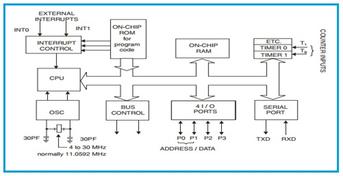
Bare Metal Programming vs RTOS: Advantages and Disadvantages
Explore the advantages and disadvantages of bare metal programming compared to RTOS. Learn about performance, complexity, security, and more.
Showing 20 posts (Page 2 of 4)
Advertisement

Explore the advantages and disadvantages of bare metal programming compared to RTOS. Learn about performance, complexity, security, and more.
Bare metal programming involves directly interacting with computer hardware without an OS, crucial for embedded systems and high-performance applications demanding precise control.

Explore the differences between bare metal programming and Real-Time Operating Systems (RTOS) for embedded systems. Understand their trade-offs and use cases.

Implement a Beaglebone Black-based IP web camera controlled remotely via a PHP website. Explore its features and setup for remote surveillance.

Explore Digital Signal Controllers (DSCs), specialized microcontrollers combining MCU and DSP strengths for real-time control and high-speed signal processing across various applications.
Explore leading DSP chip manufacturers like TI, Qualcomm, and Analog Devices. Find part numbers, features, and vendor details for your DSP needs.
Prepare for your DSP processor interview with these 10 key Q&A. Learn about DSP applications, architecture, and real-time processing.
Explore the core differences between Embedded Linux and Traditional Linux, focusing on their design, use cases, and functionality in various systems.

Explore the pros and cons of using Embedded Linux in IoT applications, including its open-source nature, scalability, and hardware support, along with its resource intensity and security vulnerabilities.
Prepare for your next embedded systems interview with these frequently asked questions and answers. Get ready to impress with your knowledge!
Learn the basics of eMMC (Embedded MultiMedia Controller), its architecture, applications, and key manufacturers. eMMC integrates flash memory and a controller in a single package.
Explore the core differences between firmware and software. Understand their definitions, features, and applications with clear examples and a comparison table.

Explore the distinctions between FPGAs and microcontrollers, including functionality, flexibility, programming, cost, and applications, to choose the right one.
Freescale Semiconductor introduces the Kinetis E-series MCUs, 32-bit microcontrollers with ARM Cortex-M0+ core, designed for high performance and extended battery life in harsh environments.
Explore the ATMEL AVR series of microcontrollers, focusing on the AVR 8-bit and AVR 32-bit architectures, key features, and performance highlights.
Learn about microcontrollers: architecture, hardware interfacing, timers, interrupts, serial communication, cross compilers, and programming. Explore differences between microcontrollers and microprocessors.
Browse profiles of job seekers in RF, wireless, and embedded systems. Contact candidates directly; RFwireless-world is not responsible for the authenticity of profiles.
Explore job opportunities related to L2/L3 protocols, including required skills, top companies, and expected salary ranges in the wireless communication and embedded systems industries.

A detailed comparison of the LPC2148 and 8051 microcontrollers, highlighting their features, specifications, similarities, and differences.
Explore microcontroller cross compilers, their function in translating code for specific targets, and memory models used. Includes memory types, variable data types and SFRs.
Advertisement